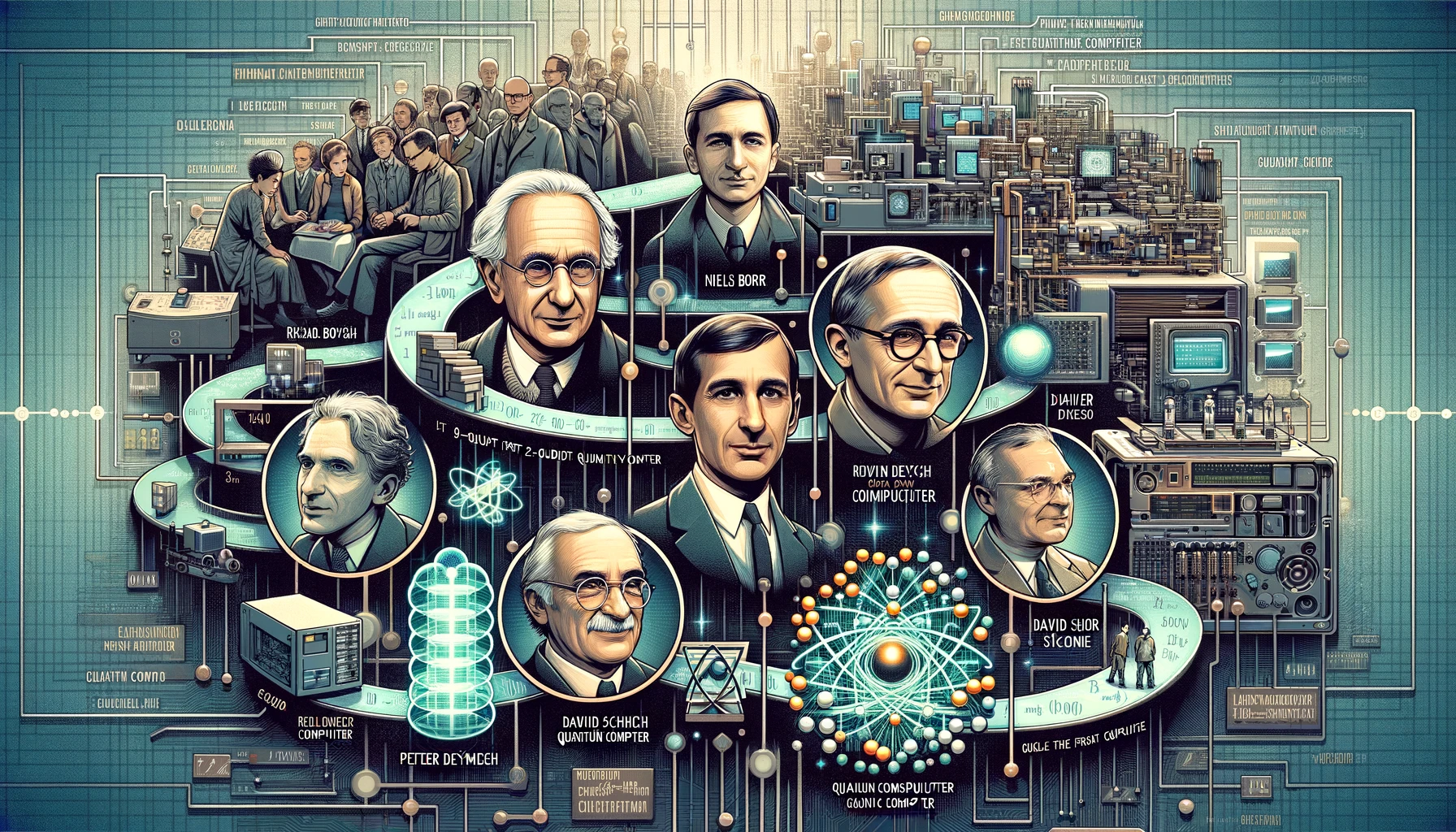Introduction:
Quantum computing, an area that fuses quantum mechanics with computer science, has seen a remarkable journey from theoretical concept to an emerging reality. This transformative technology, which promises to revolutionize various sectors by solving complex problems much faster than classical computers, has a fascinating history. In this article, we'll explore the key milestones and figures that have shaped the field of quantum computing.
1. Theoretical Beginnings:
Quantum computing's roots can be traced back to the early 20th century with the development of quantum mechanics. Scientists like Niels Bohr, Werner Heisenberg, and Erwin Schrödinger laid the groundwork with their pioneering work on the principles of quantum theory.
2. Richard Feynman’s Vision:
In 1982, physicist Richard Feynman revolutionized the field by proposing the idea of a quantum computer. He suggested that such a machine could simulate things a classical computer could not, essentially using the laws of quantum mechanics.
3. The Birth of Qubits:
In 1985, David Deutsch of Oxford University took Feynman’s ideas further, proposing the concept of the quantum Turing machine. He introduced the idea of quantum bits, or qubits, which unlike classical bits that are either 0 or 1, could exist in multiple states simultaneously.
4. Shor's Algorithm:
In 1994, mathematician Peter Shor developed a quantum algorithm that could efficiently factorize large numbers, a problem that is extremely time-consuming for classical computers. Shor’s algorithm demonstrated the potential for quantum computing to break traditional encryption methods, garnering significant attention.
5. Experimental Milestones:
The late 1990s and early 2000s saw several experimental milestones. In 1998, the first 2-qubit quantum computer was demonstrated by a group at IBM. This was followed by numerous experiments that continued to advance the capabilities of quantum computers.
6. Quantum Supremacy:
A significant milestone was achieved in 2019 when Google claimed to have achieved quantum supremacy. Their quantum computer, Sycamore, performed a specific task in 200 seconds that, according to Google, would take a state-of-the-art supercomputer approximately 10,000 years to complete.
7. The Race for Quantum Dominance:
Following Google’s announcement, the race for quantum dominance intensified. Tech giants like IBM, Microsoft, and others, as well as various governments, have invested heavily in quantum computing research.
8. Current State and Future Prospects:
As of now, quantum computing is still in its infancy, with researchers tackling issues like error correction and qubit stability. However, the potential applications of quantum computing in fields such as cryptography, drug discovery, financial modeling, and climate research continue to drive the field forward.
Conclusion:
The history of quantum computing is a tapestry of bold ideas, theoretical breakthroughs, and significant technological leaps. As the field continues to evolve, it holds the promise of solving some of the world's most complex problems, ushering in a new era of computing. The journey from a theoretical framework to practical application is an ongoing and exciting narrative in the history of science and technology.




